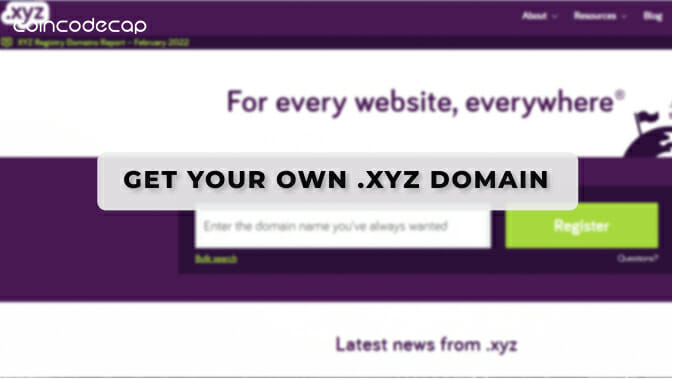It’s been a grueling year for miners, with Bitcoin halving its rewards earlier this year and indie miner favorite Ethereum finally launching its Beacon Chain to set it on course towards the promised land of Proof-of-Stake (PoS) Ethereum 2.0.
This is a problem for old school miners. There are about 1.5-3 million 4GB GPUs on the market currently mining ETH, who will soon outlive their usefulness on the Ethereum chain, potentially leaving millions of rigs piled in storages collecting dust.
But what if there were other ways you could still utilize 4GB Mining rigs?
On December 24, Ethereum’s DAG file will reach the 4GB mark causing 4GB mining rigs on the blockchain to mine at reduced efficiency.
After March 2021, their productivity will significantly drop making them unsuitable for ETH mining. Instead of switching off the rigs, ETH miners can repurpose them to mine new coins. In addition, they can sell the hash power to brokerage services, conduct dual mining, or shift to general computing.
Ethereum is among the most profitable coins to mine. Unlike Bitcoin, ETH miners could comfortably rake in profits by GPUs. Unfortunately, the network has grown exponentially, rendering low-memory GPUs obsolete. Furthermore, Ethereum has started the transition from being a proof-of-work (PoW) to a Proof-of-Stake (PoS) blockchain.
Table of contents
Ethereum, DAG, and the growing need for GPU power
It’s all about the expansion of one type of distributed ledger, Directed Acyclic Graph (DAG). DAG is baked in the root of PoW blockchains using the Ethash hashing function. Notably, the function resists mining using ASICs, hence, the prevalence of GPUs on the ETH-powered network.
DAG is a file containing data that facilitates finding new blocks and verifying transactions on the protocol. However, as the protocol grows, so does the DAG. Its growth is estimated to occur after every 30,000 blocks or 100 mining hours.
Each DAG increment is called an epoch. Notably, the file has to be loaded in the GPU’s memory to facilitate active interaction with the blockchain. Apart from mining, how best a mining rig handles the file can increase or reduce its mining speed.
Therefore, when the DAG file size exceeds a GPU rig’s memory capacity, the rig either becomes slow or unable to mine ETH. On Ethereum, the dataset is expected to reach 4GB at block 11,520,000.
This is forecasted to happen between Dec 23 or 24, 2020. When this happens, it phases out 4GB mining rigs off the Ethereum blockchain. Examples of 4GB GPU cards include AMD’s RX470/480/560/580 and Nvidia’s GTX1650/1650 Super and GTX1050Ti.
Since these mining rigs make up to 26% of all mining devices on Ethereum, it may see most of these piled in the backyard. Fortunately, there’s still hope for 4GB mining rigs to be used on the Ethereum platform.
Also Read: Best Crypto Exchange in 2021
How to use 4GB Mining Rigs on Ethereum?
You can continue maximizing your 4GB mining rigs by switching from Windows to Linux-based operating systems. The problem with Windows OS is that it assigns up to 600MB of the first GPU (GPU0) on the rig to Virtual RAM (VRAM).
Linux OS only sets 120MB aside for VRAM, leaving more room for the DAG file. Note that this will only work as long as the DAG file can fit in the GPU.
However, a more solid approach is to replace the GPU0 card with one with more memory such as 6/8GB. This provides enough room to load the DAG file and leverage the other 4GB cards in processing.
Luckily, even after the 4GB GPUs become obsolete on December 24, miners can still use them for an additional three months but on reduced efficiency.
For example, on Dec 29, the cards are projected to perform at 55 and 35 percent efficiency on Linux and Windows, respectively. Unfortunately, on March 8, 2021, the speed will fall to 22 and 14 percent on Linux and Windows OS, respectively.
Still, these are temporary solutions considering Ethereum is slowly, but surely, moving to the PoS (Ethereum 2.0) mining mechanism. When it does, we can still, however, repurpose 4GB mining rigs.
Also Read: Best Crypto Trading Bots
What else can you mine with 4G Mining Rigs?
When ETH finally rejects 4GB mining rigs, it’s time to look for alternative coins. Thanks to the general-purpose nature of GPUs compared to ASICs, the rigs can easily make the switch to other coins.
Beam (BEAM)
BEAM is a Mimblewimble-based cryptocurrency with active developer activities attributing to its viability. The coin doesn’t employ a DAG file since it uses the BeamHashIII hash algorithm. Unfortunately, to make the most out of the platform, you have to optimize the miner.
Ethereum Classic (ETC)
Although ETC is a fork of ETH, its DAG file size is still slightly above 2.5GB and projected to reach 3GB in August 2022, and 4GB in September 2025. This gives miners using 4GB GPU rigs approximately five years to continue comfortably mining on the ETC blockchain. On the flip side, ETC mining is 2-3 times less profitable than ETH mining.
RavenCoin (RVN)
The RavenCoin network uses the Kawpow algorithm, which is compatible with GPU cards. RVN is currently among the top 150 cryptocurrencies and it’s listed on reputable crypto trading platforms such as Binance. However, it’s heavy on GPUs and also quite power-intensive.
Zilliqa (ZIL)
ZIL uses the Ethash hash algorithm. Currently, its DAG size is 1.24GB, making it ideal to be mined using 4GB mining rigs.
The coin’s DAG is projected to reach 2GB, 3GB, and 4GB in Dec 2025, August 2032, and March 2039, respectively. Although this gives 4GB rig miners more time to put their ETH-rejected rigs to use, the coin doesn’t offer mouthwatering profits.
EZIL
Firstly, EZIL isn’t a coin. Rather, it’s a mining approach that maximizes mining ETC and ZIL coins. The approach works by connecting your 4GB mining rig hash power to a pool that automatically switches mining between the two coins.
Use 0670 promo code to get a cashback

Compared to switching between ZIL and ETH, the ETC-ZIL combination brings more returns. For example, estimated profits can reach approximately $428 within 30 days, making it the most profitable mining scheme for 4GB GPUs.
More Ways to Use ETH-rejected 4GB Mining Rigs Apart from directly mining other coins, the rigs can be used in various ways.
Brokerage
Instead of using rigs to directly mine ZIL, BEAM, or any other GPU-based digital currency, you can connect with brokerage services such as NiceHash and get paid.
Note that with this type of operation you’re only paid for the hash power you contribute. The brokerage service then sells the power to other users who direct it to mining different coins as per their liking.
Also Read: How to buy Bitcoin Anonymously
General computing
General computing shifts your 4GB mining rigs from crypto mining to other processing-intensive tasks. For instance, you can rent your rig’s hash power to rendering networks like Golem, remote gaming platforms like Vectordash, or artificial intelligence platforms like VastaAI.
Dual mining
Dual mining involves mining two coins at the same time using the same rig. Its advantage is that it can be used on any two coins of your choice, provided they support GPU mining.
For example, you can mine ETC and Verge (XVG). In such a setting, you can connect your 4GB mining rigs to Nanopool to mine ETC and simultaneously connect to ZPool to mine XVG.
Conclusion
4GB mining rigs still have a place on the Ethereum blockchain for an additional 60 days. When that time elapses, miners can still switch to BEAM, RVN, and other ASIC-resistant cryptocurrencies. However, before you do, you need to check the profitability margin of each coin.
A phenomenal alternative would be to adopt dual or EZIL-like mining to boost your return on investments. Note that the EZIL approach differs slightly from dual mining since, with EZIL, a pool automatically switches between two cryptocurrencies. With dual mining, the rig is constantly connected to two different pools.
Where direct mining isn’t an option, you can still sell your rig’s power to brokerage services like NiceHash or shift to AI, rendering, gaming, and other general computing services. No matter the route, 4GB mining rigs still have a place in the future.



![How to buy Ethereum in India? [Mobile and Website] 4 Buy Ethereum in India](https://coincodecap.com/wp-content/uploads/2021/03/Buy-Ethereum-in-India-768x432.png)






